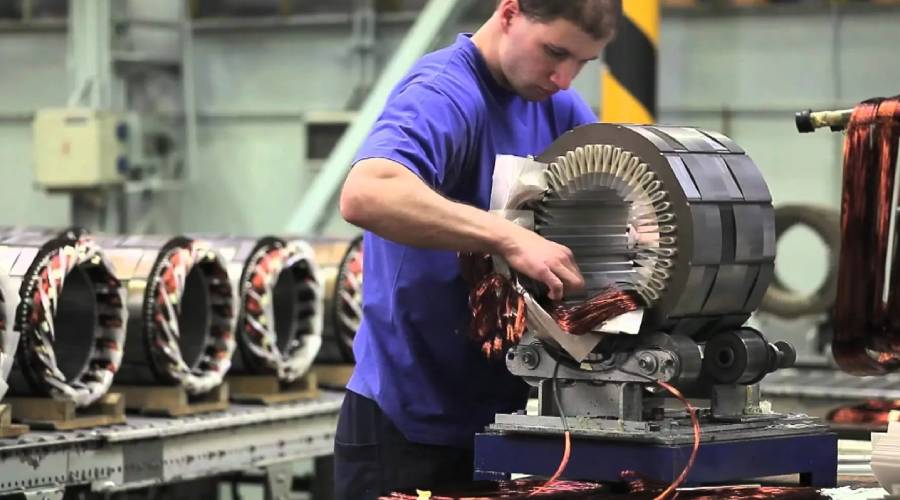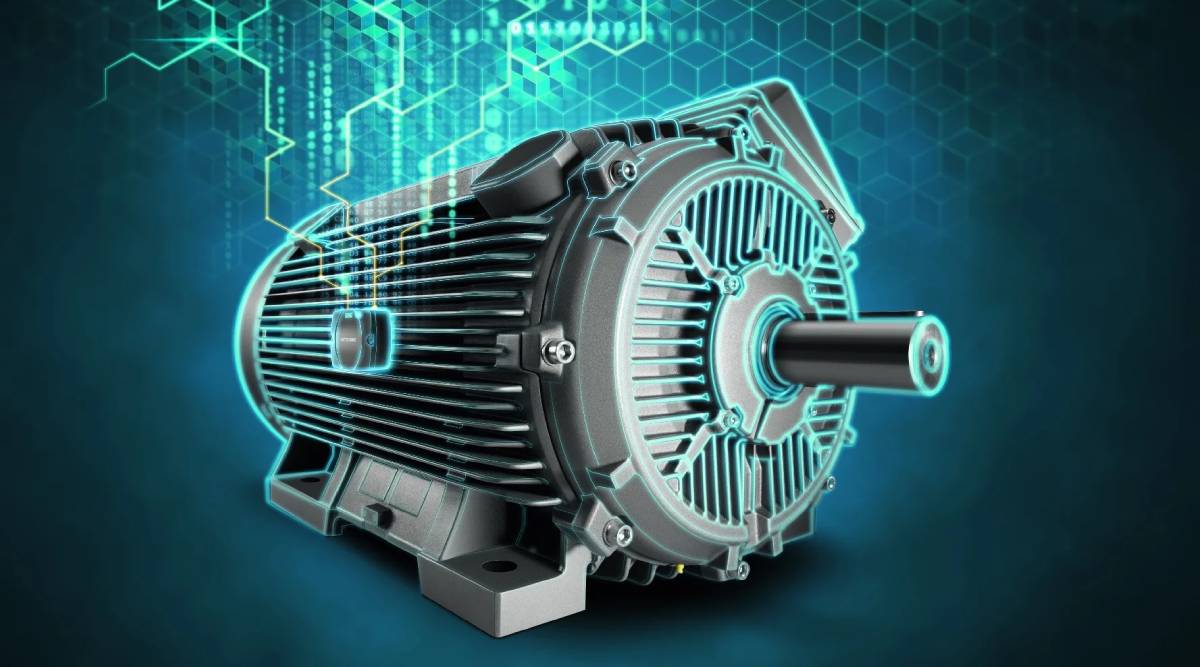At the core of countless electrical and mechanical systems lies the motor, a pivotal device that transforms electrical energy into mechanical prowess. They are categorized broadly into:
AC Motors: These are powered by alternating current and are primarily used in industrial and household applications due to their robustness and simplicity. They operate on the principle of electromagnetic induction, where a rotating magnetic field induces a current in the rotor, causing it to turn.
DC Motors: Direct current motors are used where speed control is crucial. They work on the direct interaction of a magnetic field and an armature winding, creating force in a rotational direction.
Servo Motors: These are part of a closed-loop system providing precise control of angular position, velocity, and acceleration. They are typically used in applications such as robotics, CNC machinery, and automated manufacturing.
Stepper Motors: Stepper motors move in discrete steps, providing precise control over motion. They are commonly used in printers, CNC machines, and other applications where precise positioning is required.
Foundation of Motor Technology
The foundation of motor technology lies in the interaction between magnetic fields and current-carrying conductors, resulting in motion. Michael Faraday’s law of electromagnetic induction is the cornerstone of AC motor operation, while DC motors rely on direct current and magnetic fields to produce motion. The development of these principles has led to the wide variety of motors available today.

Impact and Significance of Motors
Motors are indispensable in both electrical and mechanical industries. They drive fans, pumps, compressors, and conveyors, contributing to the automation and efficiency of manufacturing processes. In households, motors are in appliances like refrigerators, washing machines, and air conditioners. The global reliance on motors underscores their significance in modern industry and daily life.
Signs to Identify Motor Failures
Recognizing the signs of motor failure is crucial for timely repairs. Some of the common indications include:
- Unusual noises such as grinding or humming
- Excessive vibration
- Overheating
- Reduced performance or efficiency
- Electrical faults such as short circuits or insulation failures
Diagnostic Tools and Safety Equipment to Detect Motor Issues
Diagnosing motor problems requires specific tools and safety equipment such as:
- Multimeters for electrical testing
- Clamp meters for measuring current
- Insulation testers
- Thermal cameras for detecting hot spots
- Vibration analysis tools
- Safety equipment includes gloves, goggles, and insulated tools.

Understanding Motor Specifications and Data Sheets
Motor specifications and data sheets are critical for selecting the right motor for an application and for troubleshooting. Key specifications include:
Voltage and Current: Indicates the electrical requirements of the motor. Voltage ratings can vary widely, from low-voltage DC motors (e.g., 12V, 24V) to high-voltage AC motors (e.g., 230V, 460V).
Power Rating: Usually given in watts (W) or horsepower (HP), this indicates the motor’s output capability.
Speed: Given in revolutions per minute (RPM), this specifies how fast the motor can operate under its rated load.
Torque: Measured in Newton-meters (Nm) or foot-pounds (ft-lb), torque is the rotational force produced by the motor.
Efficiency: A percentage that represents how well the motor converts electrical energy into mechanical energy. Higher efficiency means less electrical energy is wasted.
Service Factor: A multiplier that indicates how much a motor can be overloaded under certain conditions without damaging it.
Insulation Class: Indicates the temperature resistance of the motor’s insulation material.
Understanding these specifications helps in ensuring that the motor matches the application’s requirements and in diagnosing issues when the motor is not performing as expected.
Tips to Prevent Motor Failure
Some of the common preventive measures include:
- Regular maintenance and inspections
- Keeping motors clean and well-lubricated
- Ensuring proper alignment and installation
- Monitoring motor temperature and performance

Cost of Repairing Different Types of Motors in UAE
The cost of motor repair can vary significantly based on the motor type, size, and extent of damage. Here are some more detailed estimates:
Small AC Motors (up to 10 HP): Repair costs can be up to 3000 AED. Factors affecting cost include bearing replacement, rewinding, and the need for new capacitors.
Medium AC Motors (10 to 50 HP): Repairs might cost between 1000 AED and 5000 AED with rewinding and machining of worn parts being major cost drivers.
Large AC Motors (over 50 HP): These can be particularly expensive to repair, with costs upto 10,000 AED depending on the extent of damage and the cost of replacement parts.
DC Motors: Repair costs are generally similar to those of AC motors but can be higher for larger units or those used in specialized applications.
Servo and Stepper Motors: Due to their precision components, repairs can be costly, maximum upto 20,000 AED, depending on the complexity and the specific application.
Role of Timely Motor Repairs in Increasing Efficiency
The timely maintenance and repairs of an electrical motor play a crucial role in enhancing the operational ways in various ways as listed below:
- Prevents Downtime
- Optimize Performance
- Extends Equipment Lifespan
- Enhance Product Quality
- Cost Saving
- Energy Efficiency

How to Check Motor Efficiency After Repair?
After a motor has been repaired, it’s important to check its efficiency to ensure it is operating optimally. This can be done using the following methods:
Power Factor Measurement: Using a power factor meter to measure the motor’s power factor (the ratio of working power to total power). An improvement in power factor indicates improved efficiency.
Load Testing: Comparing the motor’s output torque and speed under load conditions to its rated specifications.
Energy Consumption: Measuring the motor’s energy consumption under normal operating conditions and comparing it to pre-repair levels or to the specifications.
Thermal Imaging: Using a thermal camera to detect excessive heat in the motor, which can indicate inefficiencies.
Vibration Analysis: Identifies abnormal vibrations, and signaling issues like misalignment or imbalance.
Case Studies on Energy Savings Through Motor Maintenance
Manufacturing Plant Overhaul: A case study involving a manufacturing plant showed that by repairing and upgrading its motors to higher efficiency models, the plant reduced its energy consumption by 25%, resulting in annual savings of over 36,000 AED.
Hospital HVAC System: A hospital replaced its old, inefficient motors with high-efficiency ones in its HVAC system. The move resulted in a 30% reduction in energy use, saving the hospital approximately 27,500 AED annually.
Water Treatment Facility: By implementing a motor management policy that included regular maintenance, repair, and replacement of inefficient motors, a water treatment facility reduced its energy consumption by 20%, saving around 183,000 AED per year.
These case studies demonstrate the significant energy and cost savings achievable through proper motor maintenance and repair.
Buying New vs. Repairing Old Motors
The decision between buying a new motor and repairing an old one depends on factors like the age of the motor, repair costs, and efficiency improvements of new models. While new motors offer the latest technology and efficiency, repairing an existing motor can be more cost-effective and environmentally friendly.
In conclusion, timely motor repairs and maintenance are crucial for ensuring efficiency and reliability in various applications. By understanding the types of motors, recognizing signs of failure, and employing proper diagnostic and preventive measures, businesses and individuals can significantly improve their operational efficiency and save on costs.

I am a career coach with more than 5 years of experience, helping job seekers navigate their job search through individual coaching, webinars and events.
